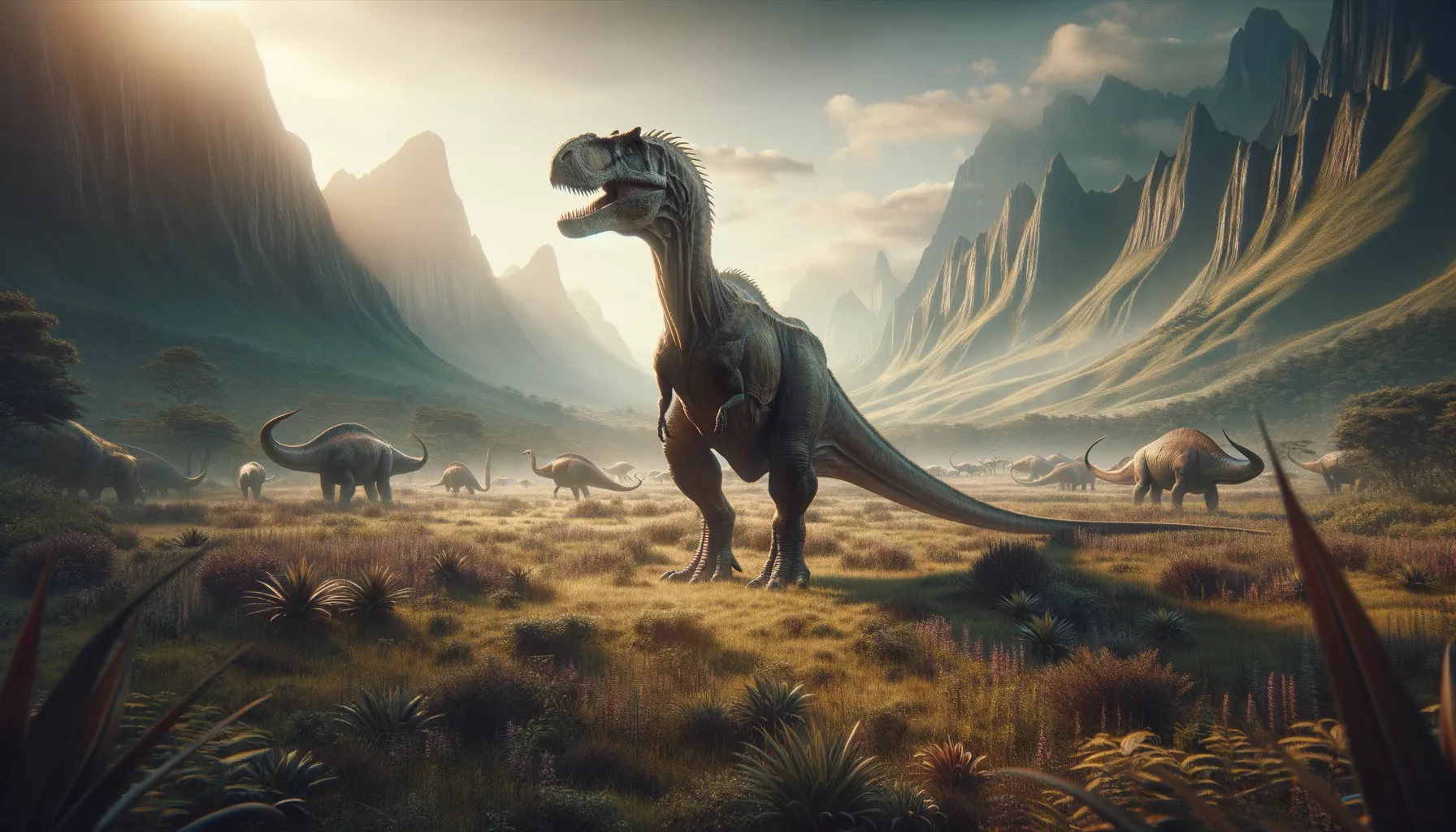
Katepensaurus
Discover a prehistoric Patagonian giant!
Period
Cretaceous
Length
Measured approximately 8 meters long.
Height
Stood about 3 meters tall.
Weight
Roughly 2,000 kilograms.
Katepensaurus was a long-necked dinosaur from the Cretaceous period known for its distinctive vertebrae. This sauropod lived in what is now South America, and like its relatives, it likely roamed in herds across open landscapes. With its unique skeletal structure, it provides valuable insights into the diversity and evolutionary paths of sauropod dinosaurs.
Diet
Katepensaurus was a herbivore, feeding primarily on plant materials such as ferns, and conifers. Its long neck allowed it to reach high foliage and also cover a wide area of ground-level vegetation.
Hunting
Being a plant eater, Katepensaurus did not engage in hunting. Instead, it foraged for plants, using its long neck to access a variety of vegetation. It likely relied on its size to deter potential predators rather than engaging in any aggressive defensive behavior.
Environmental challenges
Katepensaurus faced seasonal climate changes, which affected food availability and required migration. Additionally, it had to contend with predators that saw it as potential prey, especially the young and weak individuals. Natural barriers and geographical changes could also restrict their habitats, influencing population dynamics.
Speed
Moderate; not built for speed but could move steadily.
Lifespan
Estimated to live around 20 to 30 years.
First discovery
Discovered in Patagonia, Argentina in 2013.
Fun Facts
- Katepensaurus is a dinosaur that lived during the Late Cretaceous period, approximately 86 million years ago.
- It was discovered in Patagonia, a region renowned for its wealth of dinosaur fossils.
- Katepensaurus was part of the sauropod family, known for their long necks and tails.
- Despite its massive size, Katepensaurus was likely a herbivore, feeding on plants and trees.
- This dinosaur's name is derived from the Tehuelche word 'katepenk,' meaning 'hole' or 'cavern,' due to the large hollow spaces in its vertebrae.
- The discovery of Katepensaurus has helped scientists better understand the evolution of titanosaurs, a subgroup of sauropods.
- Although not as famous as some of its relatives like Brachiosaurus or Diplodocus, Katepensaurus offers crucial insights into dinosaur diversity near the end of the age of dinosaurs.
Growth and Development
As a sauropod, Katepensaurus underwent significant growth from hatchling to adult. This rapid growth would have required vast amounts of food and nutrients. It is believed that these dinosaurs had growth cycles that included periods of faster growth during more favorable conditions.
Habitat
Katepensaurus inhabited the warm, forested regions of what is today South America. Its environment featured lush vegetation that supported its herbivorous diet. It likely roamed in regions with access to freshwater, necessary for its daily needs and survival.
Interaction with other species
Katepensaurus likely interacted with other herbivorous species, possibly competing for food resources. It coexisted with various carnivorous dinosaurs, which posed a threat, particularly to the young. Its sheer size may have offered a level of protection from smaller predators.
Natural lifespan
It naturally lived around 20 to 30 years.
Reproduction
Reproduction was likely oviparous, laying eggs in nests situated in the ground. Parental care was minimal as seen with other sauropods, with hatchlings quickly becoming independent. Nesting sites would have to be in safe environments to protect against predators.
Social behaviour
Katepensaurus probably lived in herds, which provided protection and aided in foraging. Group living would have also facilitated migration in search of food. Communication within the herd could have involved vocalizations and displays.
Fossil locations
Fossils have been primarily found in Patagonia, Argentina, an area rich in Cretaceous deposits. The discovery of its remains there has contributed to understanding regional dinosaur fauna. Continued excavations in the region may yield further specimens.
